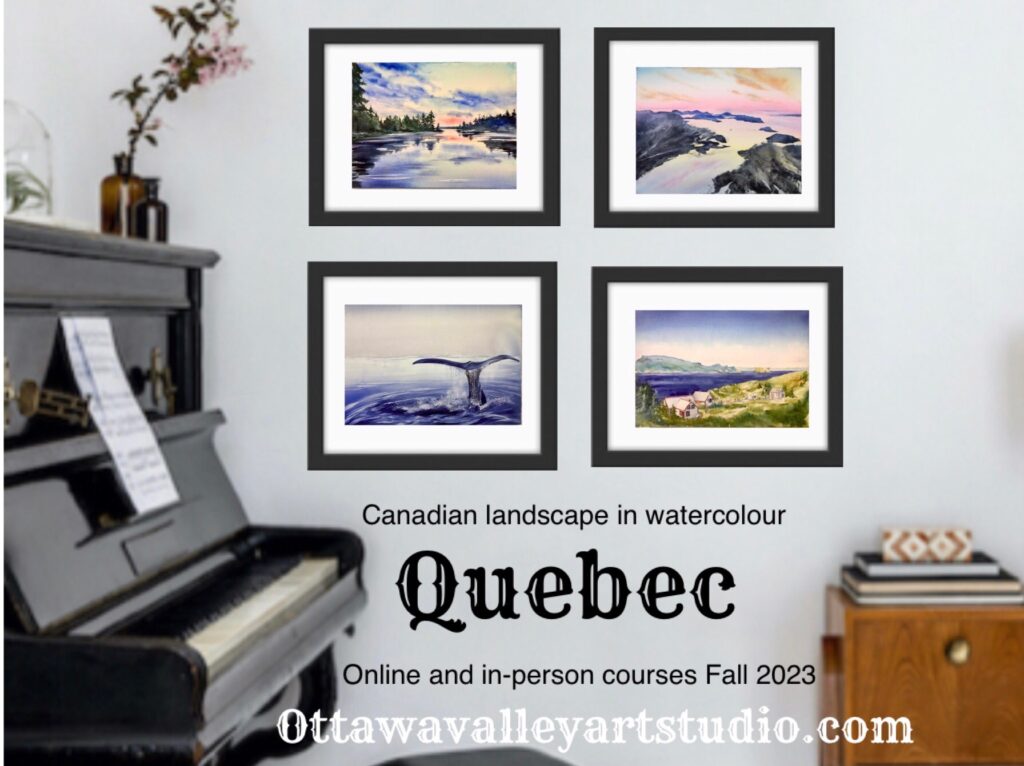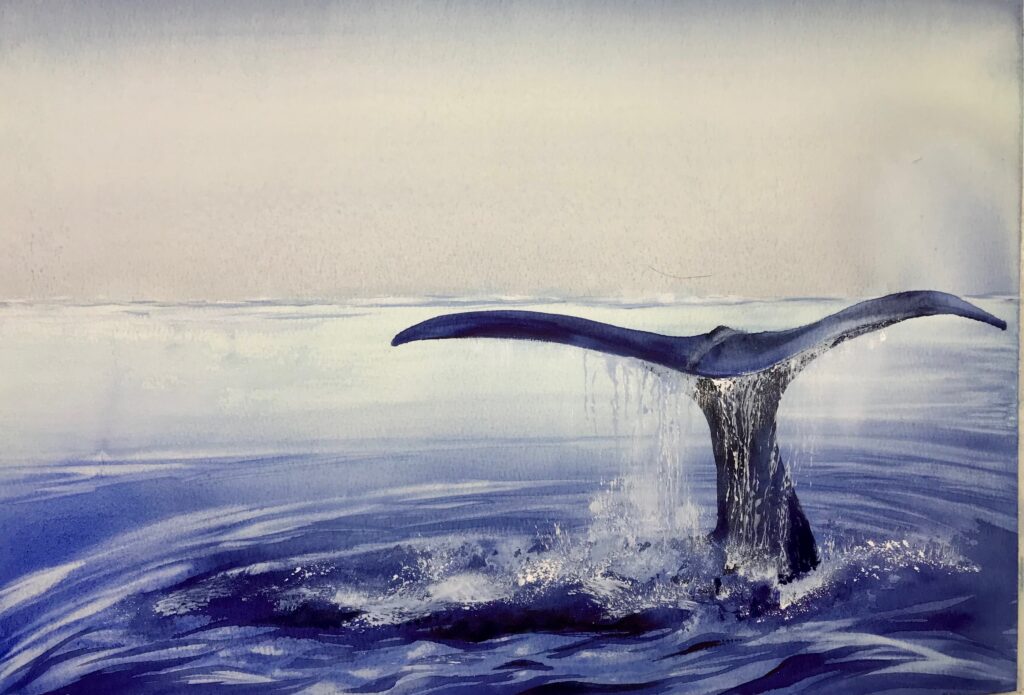Continue exploring the Canadian landscape in a new set of mini-courses. This time we will travel from East to West painting the Atlantic ocean coast of Nova Scotia, breathtaking views of Quebec, fantastic skies of Saskatchewan, and the beauty of the British Columbia coast.
Upgrade your skill level and widen up your artistic horizon!
Quebec is the fifth mini-course of the Canadian landscape set of courses. Quebec, French Québec, eastern province of Canada. Constituting nearly one-sixth of Canada’s total land area, Quebec is the largest of Canada’s 10 provinces in area and is second only to Ontario in population. You will explore the beauty of lakes, National parks and ocean coast of this incredible province.

REVIEW package for self study with 75 days of teacher support with weekly homework review
START ANYTIME
4 video lessons
6+ hours of detailed video tutorials
4 paintings
4 practical exercises
4 video homework reviews
Lifetime video access for self-studying
Course Content
What this course gives you?
In this course you will improve your skills in painting seascapes, coast lines, sky and whales. You will work developing your eye for light and reflections, shading, atmospheric perspective and depth.
What is in the course?
This course contains four lessons. You will continue to learn the theory of atmospheric perspective and use this knowledge in practice. You will paint four seascape scenes, where you will experiment with different watercolour techniques.
The online study process will be simple, stress free and understandable for every student. There will be a lots of exercise that will help you to become confident in seascape painting.
The lesson’s list
Lesson 1
Sunset

In this lesson you will learn about creating interaction of light and reflection by practicing painting the sky reflected in still water.
Lesson 2
Sepaq

In this lesson you will practice using a granulating technique to create texture. You will also practice infusion washes.
Lesson 3
Whale

In this lesson you will practice creating value and depth. You will experiment with different ways to create the illusion of moving water.
Lesson 4
Gaspesia

In this lesson you will practice atmospheric perspective rules to create distant subjects.

Flexible payment plan
Student’s work

Pat 2023 
Pat 2024 
Pat 2023 
Pat 2024
Materials that I am going to use during the course;
This list is only for your information, there is no need to get exactly what I am using:
Drawing paper, any type, a few sheets per class;
Watercolour paper, per class:
- one or two sheets of watercolour paper, 100% cotton, 300 gm2;
- And /or One or two sheets of Arches watercolour paper, 100% cotton, cold press or rough, 300 gm2, size A4 or bigger;
Watercolour brushes;
- Round # 10-12, # 6 and # 2; Escoda or Dainayw;
- calligraphy brush (recommended);
- flat synthetic brushes: 3/4 and 11/2 or larger (Grumbacher, Santa Fe Art Supply, Connoisseur )
- Liner brush (Princeton, Artist’s Loft)
Watercolour paint:
IMPORTANT; Paint in tubes gives you the best results.
This is the list what I am going to use during this course:
Lemon yellow (optional) or any light yellow, Daniel Smith
Cadmium Yellow, Daniel Smith
Yellow Ochre, Daniel Smith
Buff Titanium (optional), Daniel Smith; or you can mix Ochre and Neutral Tint
Quinacridone Gold or Quinacridone Rust or Burnt Sienna, Daniel Smith
Transparent Orange, Schmincke
Opera Pink, Daniel Smith
Quinacridone Red, Daniel Smith / Carmine, Daniel Smith
Permanent Alizarin Crimson, Daniel Smith
Cobalt Blue, Daniel Smith
Turquoise by M. Graham (optional)
Lavender, HWC
Cerulean Blue, Van Gogh
Ultramarine, Van Gogh
Delph Blue, Daniel Smith
Indigo, Grambacher
Olive Green, Van Gogh
Undersea green, Daniel Smith or you can mix Olive Green and Indigo
Burnt Umber, Daniel Smith
Neutral Tint, Schminske
Payne’s Grey, Van Gogh
Lunar Black, Daniel Smith
White Gouache
And/or
White pen, Gelly Roll, 08, Sakura, Japan
And/or
COPIC White Opaque (gives you the best result)
Artistic tape;
Sea sponge;
Watercolour board (the board which you will tape your watercolour paper to) and plexiglass board (any plastic board that the wet paper will stick to); You can use any smooth surface board big enough to place your paper on it; glass, mirror, flat baking sheet;
Watercolour palette with a large surface for mixing pigments. Alternatively, you can use a white ceramic plate;
A Pencil 3H and 2B and Eraser;
Nano mister (recommended) and water spray (optional);
Two large jars for water;
Paper towels and Kleenex;
Hair dryer.


